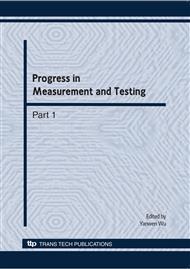p.1119
p.1124
p.1129
p.1134
p.1141
p.1147
p.1152
p.1158
p.1164
Time-Jerk Synthetic Optimal Trajectory Planning of Robot Using Strength Pareto Evolutionary Algorithm
Abstract:
The Strength Pareto Evolutionary Algorithm (SPEA) is adopted to find time-jerk synthetic optimal trajectory of a hexapod robot in the joint space. In order to get the optimal trajectory, cubic splines are employed and derived under the constraint condition of via points to assure overall continuity of velocity and acceleration. Taken both the execution time and minimax approach of jerk as objectives, and expressed the kinematics constraints as upper bounds on the absolute values of velocity and acceleration, the mathematic model of time-jerk synthetic optimal trajectory planning is built. Finally, SPEA is adopted to optimize the stair-climbing trajectory of a hexapod robot, the simulation results show that this method can solve the trajectory planning problem effectively, and the stair-climbing trajectory can meet the contradictory objective functions of high speed and low robot vibration well.
Info:
Periodical:
Pages:
1141-1146
Citation:
Online since:
May 2010
Authors:
Price:
Сopyright:
© 2010 Trans Tech Publications Ltd. All Rights Reserved
Share:
Citation:


